The Horseman
Host: Kalyeeda Station
Written by Wave Camp – Owner, Kalyeeda Station.
Justin Cooney first worked for Peter and Cheryl Camp in 1988 on the station they managed on the edge of the Northern Territory; Carlton Hill. It was here that he met his partner Julie, a Kiwi, and after a year of station work they moved on together. Justin and Julie now have two children and own a sheep and beef farm in the South Island.
Justin has pursued his love of horses and worked as a farrier and breaking and training horses in New Zealand and Perth. In 2009 Justin visited Peter and Cheryl at Charnley River and since then has returned each year for three months working as a horse breaker, trainer and helping in the stock camp and on musters. Although busy maintaining their farm, Julie spent some time on Kalyeeda mustering in 2011, and hopefully the children will visit next year.
Horses are an important part of station life, particularly in working and managing cattle. It is vital that the horses are quiet, which is particularly important as there are often beginner riders working at the station and riding as part of their work. With Justin’s working, the foals are handled from a young age and their training continued each year.
What is your role at Kalyeeda this year?
In recent years I have been working as a horse breaker and trainer at the station, along with riding out on musters with the crew and helping out with general station work. This year I’ve been working with the crew and in the yards more so than usual.
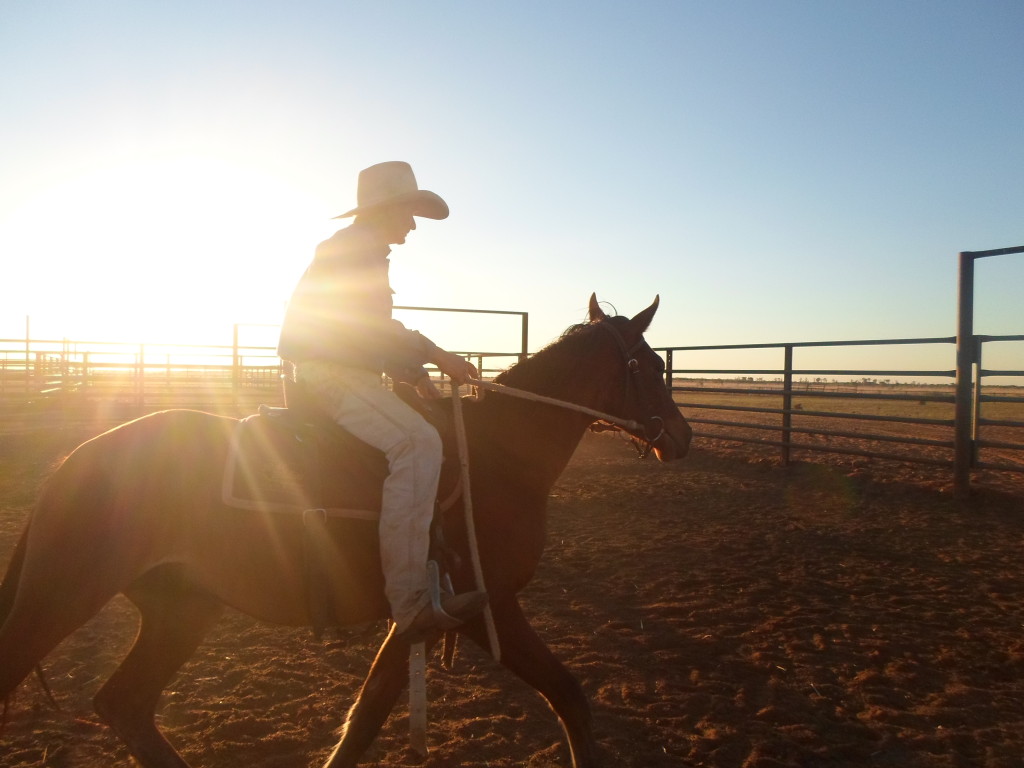 Justin breaking in a Kalyeeda yearling, Monkey.
Justin breaking in a Kalyeeda yearling, Monkey.
How long have you been working on beef cattle stations?
I’ve been working on stations on and off since I was 19, and I’ve worked throughout Australia on a number of properties; from Northern Territory, to Queensland and Western Australia.
How have the stations evolved over your time in the Kimberley, in terms of station life, and the maintenance and handling of cattle?
The work at Kalyeeda today is not dissimilar to the work I was doing when I began, we always used helicopters and horses, and we still use ‘Coacher’ mustering except we used to use more traditional methods over longer distances, where the muster would begin with a small mob of quiet cattle and the machines would keep running cattle in, where they would be held, and then the walk would continue back to the yards. It’s much the same these days, the reason being because it’s good for the cattle. While the helicopters keep running in more cattle to the mob, the horses and bikes block up, move the mob on and do the same again, this keeps the cattle quiet and that’s the main object of looking after your stock.
With helicopters, bikes and bull catchers around, do you think horses still have a necessary contribution to station work?
In my opinion, horses are always important on a station, especially here, and I have always pursued horses throughout my life. I’ve never worked on a station where horses are not used.
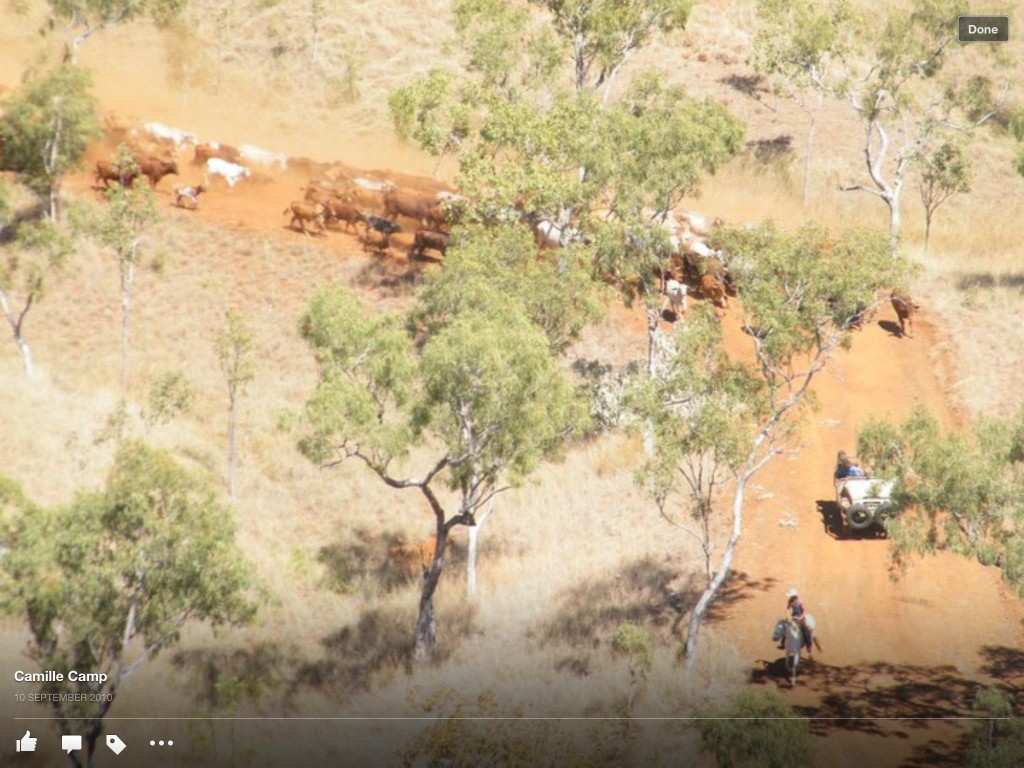 Mustering Charmley River with horses and the bullcatcher.
Mustering Charmley River with horses and the bullcatcher.
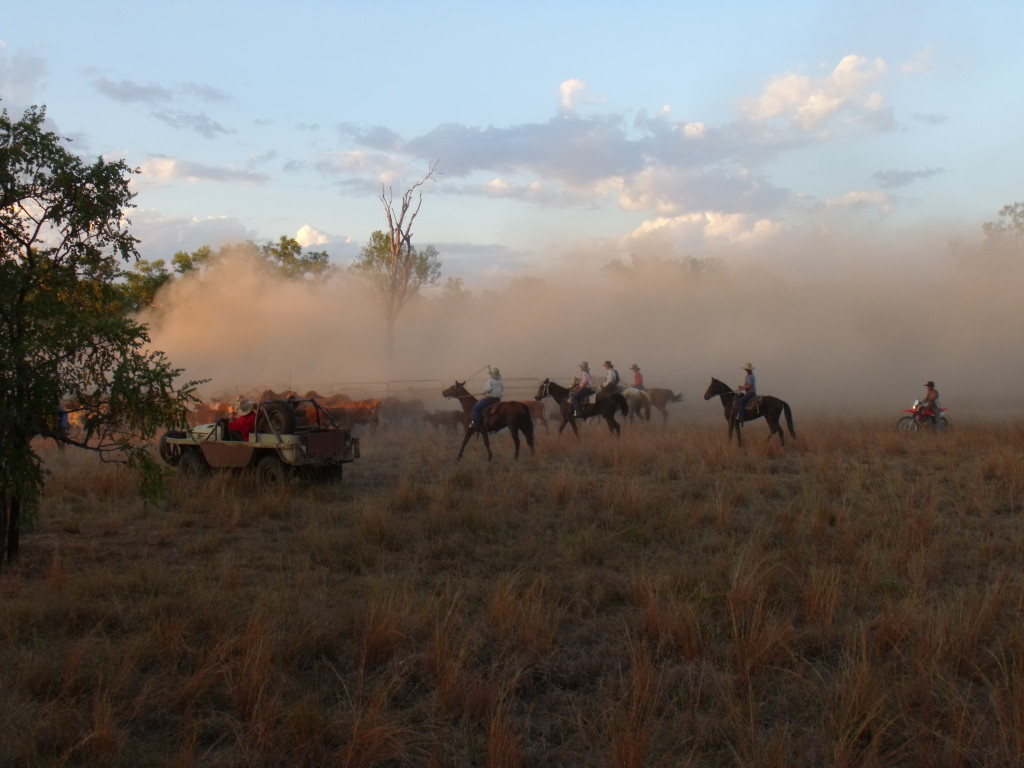 Mustering Charmley River with horses and the bullcatcher.
Mustering Charmley River with horses and the bullcatcher.
How did you get started in horse work and station work?
I’ve ridden horses my whole life and when I left home in Richmond, I drove to Alice Springs and found a job at Coniston Station through Elders.
You’ve spent a good portion of your life breaking, training and riding horses, what about rodeos and the all important Picnic Races this year?
I used to ride the bulls and saddle bronc in rodeos, but I’m 52 in September so that’s taken a backseat. I still camp draft and I’ve been picking up for the last fourteen years. I do ride in the races and you’ll see me at Derby this year, I’ll keep riding until I can’t anymore!
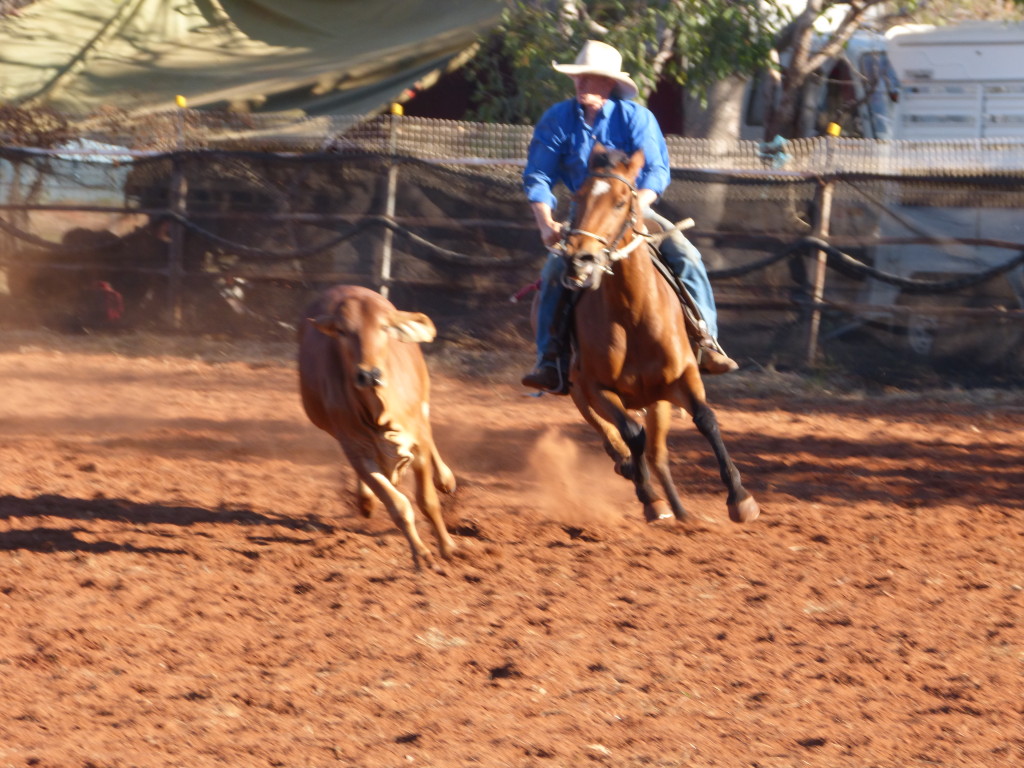 Camp Drafting on Tequila at Derby Rodeo.
Camp Drafting on Tequila at Derby Rodeo.
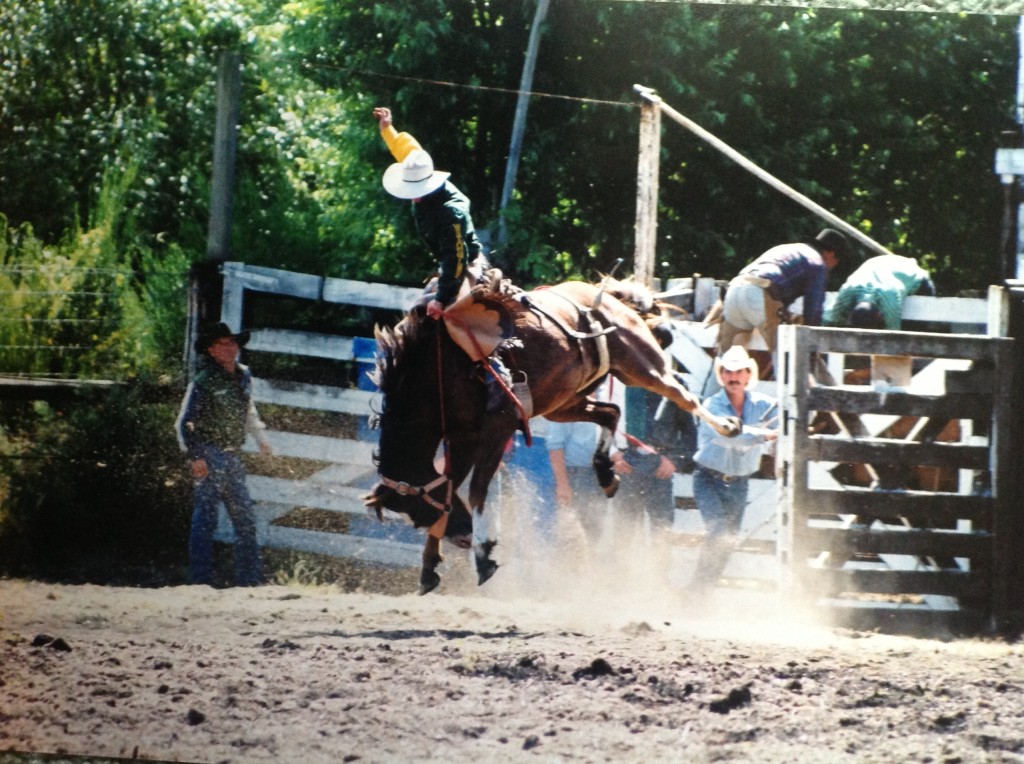 Justin in his Saddle Bronc days.
Justin in his Saddle Bronc days.
Although Justin and the horses are important here, motorbikes still have their place, and play a big part in mustering, yarding up, and most of the work we do. They form a solid and beneficial team with the horses – and won’t let us forget it.
